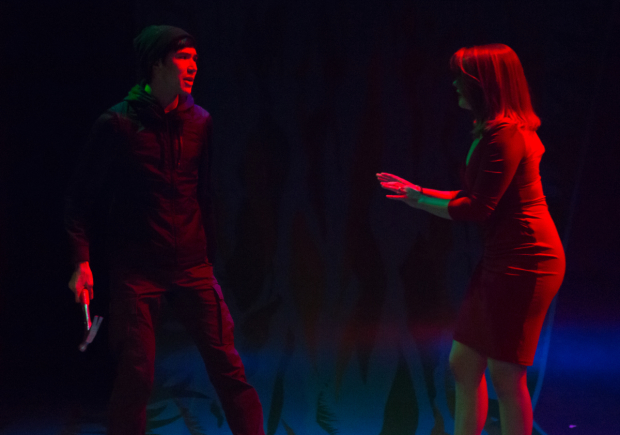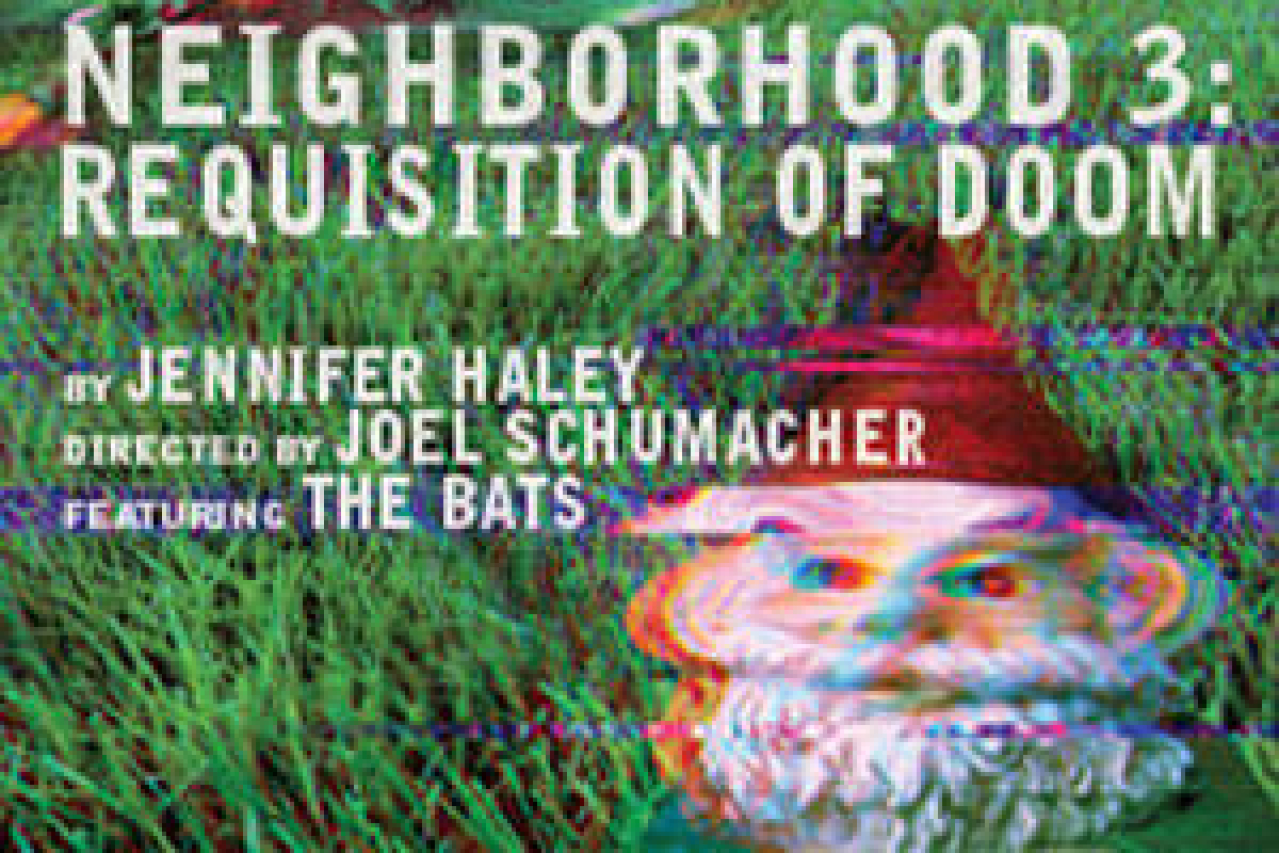Neighborhood 3: Requisition of Doom

(© Hunter Canning)
Perhaps the most unlikely theatrical collaboration of 2015 is the one between playwright Jennifer Haley, author of the Blackburn Prize-winning The Nether, and director Joel Schumacher, the mastermind behind films including St. Elmo's Fire and Batman Forever. Their first venture together is the new Flea Theater production of Neighborhood 3: Requisition of Doom, a play from 2008 that marks Schumacher's first New York stage production. The sum of the 70-minute evening is a double-edged sword: While Haley's text can be applauded for its ambition (even if it doesn't completely work), Schumacher's greenness stands in the way of its success.
In a small suburb, a group of teenagers have become captivated with a video game called Neighborhood 3: Requisition of Doom. The program uses GPS technology that allows players to map out their own community in an effort to decimate a band of zombies and escape with their lives. But as parents start wondering why their kids are becoming pale, withdrawn, and prone to bouts of anger, the lines between reality and fiction blur, with dire results.
Haley is clearly fascinated by the perils of contemporary technology. As in The Nether, which had its New York premiere earlier this year at MCC Theater, Neighborhood 3 is a chilling examination of the ethics of online roleplaying. The two shows contain a similar overarching theme in how easy it is to lose oneself in a world that we can construct down to the last detail. At times, Neighborhood 3 feels scarily real, especially in an age where more and more is being written about the social dangers of violent games like World of Warcraft and Call of Duty.

(© Hunter Canning)
Yet Neighborhood 3 is also very obviously an early play in the career of a still-developing writer. We understand the thesis question she's responding to, but what she's trying to say is less well defined. Complicating matters is the fact that her text is more archetypical than specific. The original script is written for four actors playing 16 different named roles, which, overall, are categorized as "father type," "mother type," "son type," and "daughter type." Schumacher's production uses 16 of the Flea's resident actors, the Bats, to play each individual part, a choice that somewhat muddies the storytelling. It's sometimes hard to follow an arc when new people come onstage in every scene and disappear shortly thereafter.
Schumacher's direction gives the show a disjointed, low-stakes feeling, lacking in the crucial tension that's very obvious on the page. He guides the young cast members to performances that are merely fine. And his design team seems to be functioning in several different categories (the set, by Simon Harding, is an abstract mix of green grass and pavement; Brian Aldous' lighting and Janie Bullard's sound design are firmly film noir; and Jessica Pabst's costumes are realistically unspecific). For it to be brought to life effectively, Neighborhood 3 needs a much stronger player steering the controller.

(© Hunter Canning)











